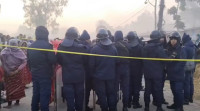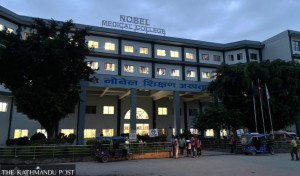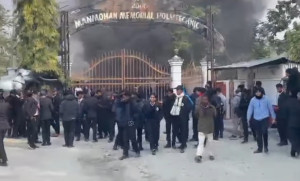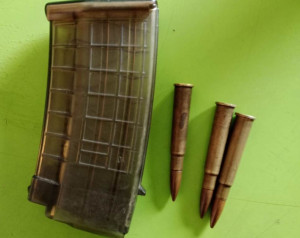Koshi Province
Rhododendron capital under-equipped for Visit Nepal 2020
Teenjure, Milke and Jaljale, spread over three districts, Tehrathum, Sankhuwasabha and Taplejung, is one of the designated areas for Visit Nepal Year 2020.Chandra Karki
TMJ area (a collective name for Teenjure, Milke and Jaljale) is long known as the “rhododendron capital” of the country—where rhododendrons of 28 species are found. The area is spread over three districts, Tehrathum, Sankhuwasabha and Taplejung, and was recently designated by the government as one of the target destinations for Visit Nepal Year 2020.
But the area is woefully under-equipped in terms of infrastructure and facilities to host tourists. Locals complain the federal government is indifferent towards developing the area as a tourism hub.
“The area is famous. It is from here that people go to the base camps of Kumbhakarna, Makalu and Kanchenjunga mountains,” said Hima Khanal, a local of Gupha Bazaar, which lies along the trek trail in TMJ. “But the area lacks infrastructure, even the barebones.”
Despite the number of visitors continuing to rise yearly, the bazaars are ill-equipped to host them, said Uday Kumar Tamang, who runs a hotel in Chauki Bazaar, one of the many bazaars that fall along the trail in TMJ.
“The hotels cannot even host a total of 100 tourists for the night,” Tamang told the Post.
Yadav Bahadur Khapung, chief of Menchayayam Rural Municipality, said that even though the local units have invested in infrastructure, the effort is not enough. “The area is big and there are many places to visit. We have done whatever we could as local governments,” Khapung said. “But the area won’t see a significant change unless the central government pays heed to its development.”
The few roads, health facilities and lodges that are in the area are in a sorry state, according to Khapung.
For security, there are police posts in Chauki and Gupha bazaars, the two most popular trade hubs in the area, but they lack manpower. Whatever few health posts there are, are far and few in between.
“If anybody who visits the area suddenly gets ill, where would one take them?” said Chhiring Lama, a tourism entrepreneur.




 12.12°C Kathmandu
12.12°C Kathmandu













%20(1).jpg&w=300&height=200)

